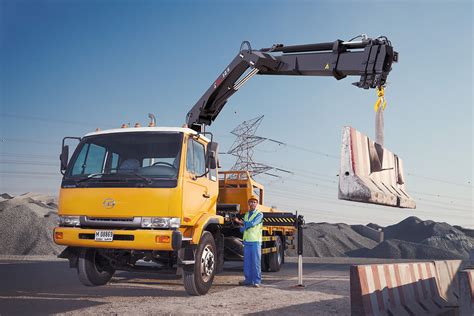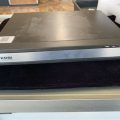How to Spot a Fake Hiab Loader Crane: A Comprehensive Guide
In the bustling world of construction and heavy lifting, Hiab loader cranes are indispensable tools. Their versatility, strength, and efficiency make them a favorite choice for various tasks, from moving heavy loads to reaching difficult-to-access areas. However, with their popularity comes the unfortunate reality of counterfeit products flooding the market. Recognizing a genuine Hiab crane from a fake one is crucial for ensuring safety, reliability, and value for your investment.
This comprehensive guide will equip you with the knowledge and tools to spot a fake Hiab loader crane. We’ll delve into the common red flags, essential verification methods, and crucial factors to consider before purchasing. By following these steps, you can protect yourself from potential risks and make a smart investment in a reliable Hiab loader crane.
Let’s dive in and equip you with the knowledge to identify a fake Hiab crane and safeguard your investment.
What are the signs of a fake Hiab loader crane?
Spotting a fake Hiab loader crane can be a challenge, especially for those unfamiliar with the intricacies of these machines. But with careful observation and a keen eye, you can identify several telltale signs that indicate a counterfeit product. Here are some key factors to watch out for:
- Unusually low pricing: If the price of a Hiab loader crane seems significantly lower than market standards, it could be a red flag. Legitimate Hiab cranes are engineered to the highest quality standards, and their cost reflects that. Be wary of deals that seem too good to be true.
- Poor quality materials: Inspect the crane’s construction. Fake Hiab cranes often use substandard materials that are less durable and prone to failure. Look for signs of cheap welds, uneven paint finishes, and flimsy components.
- Missing or incorrect markings: Authentic Hiab loader cranes bear distinct markings and labels. Check for the Hiab logo, serial number, and manufacturer information. Fakes might lack these markings or have inconsistent, poorly printed labels.
- Suspect origin: Be cautious of sellers claiming their Hiab crane originated from an unusual source or a country not known for manufacturing them. Legitimate Hiab cranes are typically manufactured in established facilities with strict quality controls.
By being aware of these signs, you can significantly reduce the risk of purchasing a fake Hiab crane.
How can I verify the authenticity of a Hiab loader crane?
Once you suspect a Hiab crane might be fake, it’s essential to verify its authenticity. Here are some steps you can take:
- Contact the manufacturer: Hiab provides a dedicated customer service line and online resources for authenticity checks. Contact them with the crane’s serial number or any other identifying information. They can confirm its authenticity and provide details about its origin and specifications.
- Inspect the documentation: A genuine Hiab loader crane comes with comprehensive documentation, including user manuals, safety instructions, and warranty information. Check for these documents and ensure they are consistent with the crane’s model and serial number.
- Check online resources: Hiab has an official website and online databases with registered serial numbers. Cross-reference the crane’s information with these resources to confirm its authenticity.
Why is it important to buy a genuine Hiab loader crane?
Purchasing a genuine Hiab loader crane is crucial for several reasons. It ensures safety, reliability, and value for your investment.
- Safety first: Fake Hiab cranes are often built with substandard materials and components, leading to safety risks. They may fail under heavy loads, putting lives and property at risk.
- Reliability matters: Genuine Hiab cranes are built to last, with robust designs and components. A fake crane might malfunction or break down frequently, causing costly downtime and delays.
- Value for your money: Investing in a genuine Hiab crane might seem pricier upfront, but it offers long-term value. It will perform reliably, last longer, and require less maintenance, making it a worthwhile investment.
Choosing a genuine Hiab crane prioritizes safety, reliability, and long-term value.
What are the benefits of using a Hiab loader crane?
Hiab loader cranes offer a wide range of benefits, making them a versatile and indispensable tool across various industries.
- Versatility: Hiab cranes are designed to handle various tasks, from loading and unloading heavy objects to reaching difficult-to-access areas.
- Efficiency: They streamline lifting operations, reducing the need for multiple equipment and manpower, saving time and resources.
- Safety: With proper operation and maintenance, Hiab cranes enhance safety by minimizing manual lifting, reducing the risk of accidents.
These benefits make Hiab cranes a preferred choice for contractors, logistics companies, and other businesses requiring heavy-duty lifting solutions.
What are some of the common Hiab crane models?
Hiab offers a diverse range of crane models, each tailored to specific lifting needs. Understanding their features and capabilities can help you choose the best option for your project.
- Hiab XS: This model is designed for light-duty lifting, offering a compact and agile solution for smaller tasks. It’s commonly used for loading and unloading goods, delivering construction materials, and handling various lifting needs in urban environments.
- Hiab X-HiPro: This series boasts powerful hydraulics and advanced control systems, making it ideal for heavy-duty lifting applications. It’s suitable for handling large loads, reaching high elevations, and tackling complex lifting challenges.
- Hiab X-Quad: The X-Quad series is known for its stability and versatility, with advanced features like four-wheel steering and a compact footprint. It’s a popular choice for various industries, from construction and logistics to transportation and waste management.
Each Hiab crane model is equipped with features that cater to specific needs, ensuring optimal performance and safety for diverse applications.
How do I find a reliable Hiab loader crane dealer?
Selecting a trustworthy Hiab loader crane dealer is crucial to ensure you receive a genuine product and support. Here’s a guide for finding a reputable dealer:
- Research: Begin by researching online, checking customer reviews, and exploring dealer websites to gather information about their reputation, experience, and customer satisfaction.
- Seek referrals: Ask for recommendations from colleagues, industry contacts, or professional associations within your field. Personal referrals can provide valuable insights into a dealer’s reliability and service quality.
- Verify certifications: Ensure the dealer is authorized to sell and service Hiab loader cranes. Check for official certifications and partnerships with the manufacturer.
- Visit the dealer: Make a visit to the dealer’s premises. Observe their facilities, inventory, and overall professionalism. This firsthand experience can help you gauge their trustworthiness and commitment to customer service.
Finding a reliable Hiab loader crane dealer ensures you receive a genuine product, timely support, and peace of mind.
What are the common maintenance requirements for a Hiab loader crane?
Proper maintenance is essential to extend the life of your Hiab loader crane and ensure its safe operation. Here’s a rundown of common maintenance requirements:
- Regular inspections: Conduct routine inspections of all components, including hydraulic systems, boom, cables, and control systems. Check for leaks, wear and tear, or any signs of damage.
- Lubrication: Regularly lubricate moving parts, such as bearings, gears, and pins, to reduce friction and prevent premature wear.
- Fluid changes: Replace hydraulic fluids, engine oil, and other fluids according to the manufacturer’s recommendations to maintain optimal performance and prevent system failures.
- Component replacement: Replace worn-out or damaged components promptly. This includes cables, hydraulic hoses, control valves, and any other parts that have exceeded their service life.
By following these maintenance practices, you can keep your Hiab crane in top shape and ensure its safe and reliable operation.
What are the safety precautions when operating a Hiab loader crane?
Operating a Hiab loader crane requires utmost caution and adherence to safety guidelines. Here are essential safety precautions:
- Proper training: Ensure all operators have received comprehensive training on the crane’s operation, safety features, and emergency procedures.
- Pre-operational inspection: Before every operation, conduct a thorough inspection of the crane, checking for any defects, leaks, or damage.
- Load capacity: Never exceed the crane’s rated load capacity. Overloading can lead to structural failure and catastrophic accidents.
- Safe lifting area: Ensure the lifting area is clear of obstructions, personnel, and other hazards. Always maintain a safe distance from power lines and other potential hazards.
- Emergency procedures: Be familiar with the crane’s emergency procedures and have a plan in place in case of an unexpected event.
By prioritizing safety, you can minimize risks and ensure a smooth and secure lifting operation with your Hiab loader crane.
What are some tips for choosing the right Hiab loader crane for my needs?
Selecting the right Hiab loader crane for your specific needs requires careful consideration. Here are some key tips:
- Lifting capacity: Determine the maximum weight you need to lift. Choose a crane with a capacity that exceeds your requirements for safe and efficient operation.
- Reach: Consider the horizontal and vertical reach required for your tasks. Select a crane with sufficient reach to handle your lifting needs effectively.
- Terrain: Assess the terrain where you’ll operate the crane. Choose a crane with suitable ground clearance, tire size, and maneuverability for your work environment.
- Budget: Set a realistic budget for the crane purchase and factor in ongoing maintenance costs. Choose a crane that aligns with your financial constraints.
- Consult with experts: Seek professional advice from Hiab dealers, crane experts, or industry professionals to gain insights and recommendations tailored to your specific lifting needs.
By carefully considering these factors, you can make an informed decision and choose a Hiab loader crane that meets your requirements and ensures efficient and safe lifting operations.
Where can I find more information about Hiab loader cranes?
If you’re seeking further information about Hiab loader cranes, you can find a wealth of resources online and offline.
- Hiab website: The official Hiab website provides comprehensive information about their products, including specifications, user manuals, and technical documentation.
- Hiab dealers: Reach out to authorized Hiab dealers for expert advice, product demonstrations, and personalized guidance on choosing the right crane for your needs.
- Industry publications: Consult industry publications and journals specializing in construction, logistics, and material handling for articles and insights on Hiab loader cranes.
By leveraging these resources, you can expand your knowledge about Hiab loader cranes and make informed decisions for your lifting operations.
Table summarizing information on Hiab loader cranes:
| Topic | Key Information |
|---|---|
| Signs of a Fake Hiab Crane | Unusually low pricing, poor quality materials, missing or incorrect markings, suspect origin |
| Verifying Authenticity | Contact the manufacturer, inspect documentation, check online resources |
| Benefits of Using a Genuine Hiab Crane | Safety, reliability, value for money, versatility, efficiency |
| Common Hiab Crane Models | Hiab XS, Hiab X-HiPro, Hiab X-Quad |
| Finding a Reliable Hiab Crane Dealer | Research, seek referrals, verify certifications, visit the dealer |
| Maintenance Requirements | Regular inspections, lubrication, fluid changes, component replacement |
| Safety Precautions | Proper training, pre-operational inspection, load capacity, safe lifting area, emergency procedures |
| Choosing the Right Hiab Crane | Lifting capacity, reach, terrain, budget, consult with experts |
| Additional Resources | Hiab website, Hiab dealers, industry publications |
FAQ



